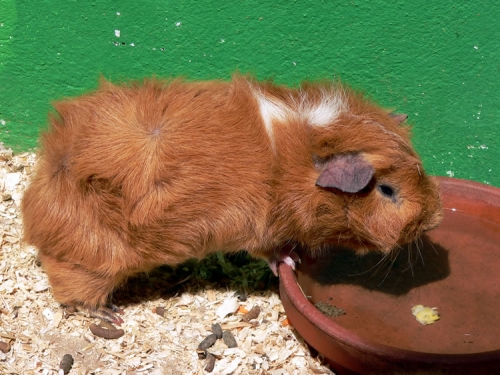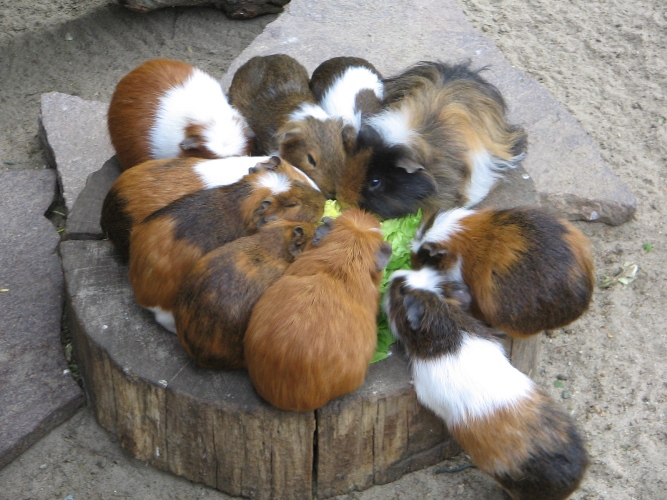

 :: Food, Food, and more Food!
:: Food, Food, and more Food!
 Like the debate
on the
classification of the guinea
pig, there is controversy on whether the animal is an
herbivore (consuming only autotrophs) or an omnivore
(eats both plants and animals.)
Many believe they only consume plants and grains, but
others say when in dire need, they will eat other
animals.
Like the debate
on the
classification of the guinea
pig, there is controversy on whether the animal is an
herbivore (consuming only autotrophs) or an omnivore
(eats both plants and animals.)
Many believe they only consume plants and grains, but
others say when in dire need, they will eat other
animals.
Seeing as Cavia porcellus is a domesticated guinea pig, it does not need to overcome any obstacles to acquire its food. Thanks to the years of the guinea pig being used as a laboratory research animal, its nutritional requirements have been established exactly.
A good balanced diet for a guinea pig consists of commercially prepared pellet or chow, supplemented by fresh greens, water and salt. The best fresh greens to feed a guinea pig are kale and cabbage. Alfalfa is also highly recommended.
 Guinea pigs, like humans, are
unable to create their own vitamin C.
This means they have to eat fresh vegetables
every day. Guinea pigs don’t drink a lot of water, but
it is still a necessity for them to have water
available.
Guinea pigs do not store their food like other rodents,
for example, a hamster.
Instead, they eat very often in small amounts to
keep their digestive system working properly.
Guinea pigs, like humans, are
unable to create their own vitamin C.
This means they have to eat fresh vegetables
every day. Guinea pigs don’t drink a lot of water, but
it is still a necessity for them to have water
available.
Guinea pigs do not store their food like other rodents,
for example, a hamster.
Instead, they eat very often in small amounts to
keep their digestive system working properly.
Guinea pigs have a closed circulatory system, and they have a surprisingly high resting heart rate of 275 beats per minute. Compared to the human’s average of 70 beats per minute, that is incredibly fast!



 :: LINKS
:: LINKS



 :: Learn More About:
:: Learn More About:

